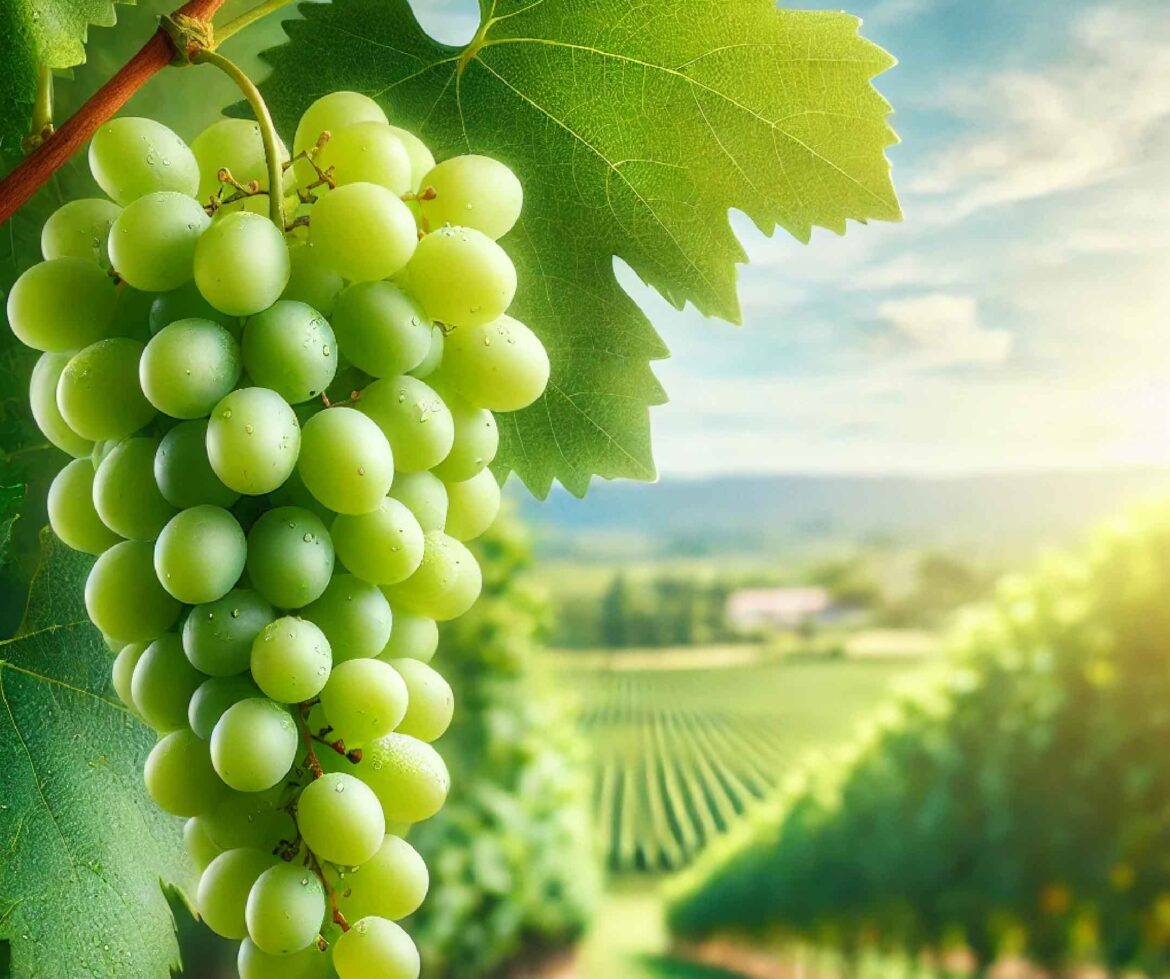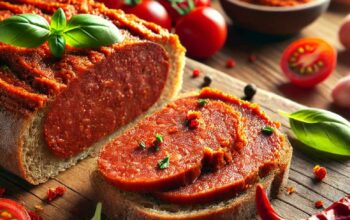Introduction
Kerner is a unique grape variety that has gained recognition for its distinctive flavor profile and versatility in winemaking. This article delves into the rich history, botanical characteristics, and various aspects of Kerner, highlighting its importance in the wine industry and beyond.
History of Kerner
The origins of Kerner date back to 1929 when it was first created by August Herold, a German grape breeder. It is a hybrid of Trollinger (also known as Schiava Grossa) and Riesling, combining the best traits of both parent varieties. The grape was named after the German poet and physician Justinus Kerner, known for his love of wine. Kerner gained popularity quickly, especially in Germany, and was officially recognized as a grape variety in 1969. Its cultivation spread to other parts of Europe and the world, making it a significant player in the global wine industry.
Botanical Aspects
Kerner vines are characterized by their robust growth and adaptability to various climates. The grape clusters are medium-sized and cylindrical, with berries that are greenish-yellow and possess a thick skin. Kerner is known for its resistance to frost and its ability to thrive in cooler climates, which makes it an ideal variety for regions that experience harsh winters. The vines prefer well-drained soils and benefit from careful vineyard management to ensure optimal grape quality.
Cultivation Regions
Kerner is primarily cultivated in Germany, where it occupies a significant portion of vineyard land, particularly in regions such as the Mosel, Pfalz, and Rheinhessen. It is also grown in Austria, Switzerland, Italy (especially in the Alto Adige region), and some parts of the United States, particularly in cooler areas like the Pacific Northwest. Each region imparts unique characteristics to the wine, influenced by the local terroir and climate conditions.
Viticulture Practices
Effective viticulture practices are crucial for the successful cultivation of Kerner. This includes proper pruning techniques to control vine vigor and ensure balanced fruit production. Vineyards often employ trellising systems to support the growth of the vines and maximize sun exposure. Pest and disease management is also essential, with a focus on preventing issues such as powdery mildew and botrytis. Sustainable farming practices are increasingly being adopted to promote environmental health and enhance grape quality.
Kerner Grape Varieties
Kerner is predominantly a single varietal wine, but it can also be blended with other grapes to create unique wine profiles. The primary characteristic of Kerner is its aromatic intensity, which is often described as a blend of Riesling’s floral and fruity notes with a hint of spice from its Trollinger parentage. The wines range from dry to sweet, catering to diverse consumer preferences.
Harvesting Process
The timing of the harvest is critical for Kerner, as it significantly affects the wine’s flavor profile. Harvest usually occurs in late September to early October when the grapes have reached optimal ripeness. Traditional hand-picking methods are often preferred to ensure the grapes are handled delicately and any under-ripe or damaged fruit is excluded. Mechanical harvesting is also used in larger vineyards, though it requires careful calibration to avoid damaging the grapes.
Winemaking Process
The winemaking process for Kerner involves several stages, from crushing and fermentation to aging and bottling. After harvesting, the grapes are crushed to release the juice, which is then fermented at controlled temperatures to preserve the aromatic qualities. Depending on the desired wine style, the wine may undergo aging in stainless steel tanks or oak barrels. The winemaker’s decisions during this process greatly influence the final product’s characteristics, from its acidity and sweetness levels to its aromatic complexity.
Flavor Profile
Kerner wines are celebrated for their vibrant and expressive flavor profile. They typically exhibit aromas of white flowers, green apple, citrus fruits, and a touch of minerality. The palate is often crisp and refreshing, with balanced acidity and a hint of spice. Sweet versions of Kerner can showcase more pronounced fruit flavors, such as apricot and peach, making them a delightful choice for dessert pairings.
Kerner Wine Styles
Kerner wines come in various styles, each offering a unique tasting experience. Dry Kerner wines are popular for their crispness and food-friendly nature. Sweet Kerner wines, including late-harvest and ice wines, highlight the grape’s natural sugar content and concentrated flavors. Sparkling Kerner wines, though less common, are prized for their effervescence and aromatic intensity, making them suitable for celebrations and special occasions.
Food Pairings
Pairing Kerner wines with food can enhance the dining experience, bringing out the best in both the wine and the dish. Dry Kerner wines complement seafood, poultry, and light pasta dishes, thanks to their acidity and freshness. Sweet Kerner wines pair beautifully with desserts like fruit tarts, cheese platters, and creamy desserts. The versatility of Kerner makes it a great choice for a wide range of culinary creations.
Health Benefits
Moderate consumption of Kerner wine, like other wines, offers several health benefits. It contains antioxidants, such as resveratrol, which are known for their potential to reduce the risk of heart disease and certain cancers. Additionally, the wine’s natural acidity aids in digestion, making it a favorable choice for pairing with meals. However, it is important to consume alcohol responsibly to fully benefit from its positive effects.
Economic Impact
Kerner plays a significant role in the wine market, contributing to the economic stability of wine-producing regions. Its cultivation and production provide employment opportunities and support local economies. The demand for Kerner wines, both domestically and internationally, drives trade and boosts the reputation of regions known for producing high-quality Kerner. This economic impact underscores the importance of maintaining high standards in viticulture and winemaking practices.
Sustainability in Kerner Cultivation
Sustainability is increasingly important in Kerner cultivation. Winegrowers are adopting practices such as organic farming, reduced pesticide use, and water conservation to minimize environmental impact. Sustainable viticulture not only benefits the environment but also enhances grape quality and promotes biodiversity in vineyards. Consumers are becoming more aware of the importance of sustainability, driving demand for wines produced with eco-friendly practices.
Notable Producers
Several wineries and vineyards are renowned for their exceptional Kerner wines. In Germany, Weingut Dr. Loosen and Weingut Heymann-Löwenstein are celebrated for their high-quality Kerner. In Italy, Cantina Terlano in Alto Adige produces notable Kerner wines. These producers are known for their commitment to excellence and innovation in winemaking, making them influential figures in the Kerner wine industry.
Kerner in Popular Culture
Kerner has made its mark in popular culture, often associated with fine dining and sophisticated wine experiences. It is frequently featured in wine tasting events, festivals, and media related to food and wine. The grape’s unique characteristics and versatility have earned it a dedicated following among wine enthusiasts and connoisseurs, further cementing its place in the cultural landscape.
Challenges in Kerner Production
Producing Kerner is not without its challenges. The grape is susceptible to certain pests and diseases, such as powdery mildew and botrytis. Climate change poses additional risks, with unpredictable weather patterns affecting grape quality and yields. Winemakers must employ proactive measures to combat these challenges, such as integrated pest management and climate-resilient viticulture practices.
Innovations and Research
Ongoing research and innovation are vital for the future of Kerner. Studies on grape genetics, climate adaptation, and sustainable farming techniques are helping to improve the resilience and quality of Kerner vines. Innovations in winemaking, such as precision viticulture and advanced fermentation technologies, are also enhancing the production process, resulting in more consistent and high-quality wines.
Comparisons with Other Grapes
Kerner is often compared to its parent varieties, Riesling and Trollinger, as well as other aromatic white grapes like Gewürztraminer and Müller-Thurgau. While it shares some similarities with these grapes, Kerner stands out for its unique flavor profile and adaptability. Understanding these comparisons helps consumers appreciate the distinct qualities that Kerner brings to the table.
Future Prospects
The future of Kerner looks promising, with growing interest from both consumers and producers. Trends such as the increasing demand for aromatic white wines and sustainable viticulture practices bode well for Kerner’s continued success. As winemakers continue to explore new techniques and regions for Kerner cultivation, the grape’s popularity is likely to expand, bringing new and exciting wines to the market.
Conclusion
Kerner is a remarkable grape variety that offers a unique and enjoyable wine experience. From its rich history and botanical characteristics to its diverse wine styles and food pairings, Kerner has much to offer both novice and seasoned wine enthusiasts. Its future in the wine industry looks bright, with ongoing innovations and a commitment to quality ensuring its continued success.
FAQs
What is Kerner?
Kerner is a grape variety created by crossing Trollinger and Riesling, known for its aromatic intensity and adaptability to cooler climates.
Where is Kerner primarily grown?
Kerner is primarily grown in Germany, Austria, Switzerland, Italy, and some parts of the United States, particularly in cooler regions.
What are the key characteristics of Kerner wine?
Kerner wines typically exhibit aromas of white flowers, green apple, citrus fruits, and a touch of minerality, with a crisp and refreshing palate.
How should Kerner wines be served?
Kerner wines are best served chilled, around 8-10°C (46-50°F), to enhance their aromatic qualities and refreshing acidity.
What foods pair well with Kerner wine?
Dry Kerner wines pair well with seafood, poultry, and light pasta dishes, while sweet Kerner wines complement desserts like fruit tarts and cheese platters.
Are there any health benefits to drinking Kerner wine?
Moderate consumption of Kerner wine offers health benefits such as antioxidants that reduce the risk of heart disease and aid in digestion.




